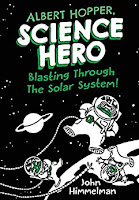Last year I saw something on Twitter about
Ursula LeGuin's work schedule.
This article on the subject refers to it and LeGuin's discipline. But when I saw it, I didn't think discipline. I thought, What?! She didn't write after noon and spent an hour on lunch and two hours reading and listening to music? I want that life!
Ursula LeGuin's Daily Schedule (From A 1988 Interview)
- 5:30 AM--Wake up and lie there and think
- 6:15 AM--Get up and eat breakfast (lots)
- 7:15 AM--Get to work writing, writing, writing
- Noon--Lunch
- 1:00-3:00 PM--Reading and listening to music
- 3:00-5:00 PM--Correspondence, maybe house cleaning
- 5:00-8:00 PM--Make dinner and eat it
- After 8:00 PM--I tend to be very stupid and we won't talk about this
I've seen this schedule referred to as LeGuin's "ideal" writing schedule. However, I haven't been able to find the interview in which LeGuin discussed it. I don't know if she used the term "ideal," which might mean something like, "This is my preferred schedule, but you do what you can do" or if others are applying the term to it, which might mean, "Wow. This is the perfect work schedule, isn't it?"
Because it does sound pretty great.
Gail's Daily Schedule
- 5:00 to 7:00 AM--Wake up at some point, lie there and think, read news sites and Facebook.
- 7:20 to 8:00 AM to 10:00 or so--Get up, dress, exercise, eat something, mess in kitchen
- 10:00 to 11:00--Start work
- 11:00 to whenever--Work on a 45-minute work/15-minute do something else schedule. (Unit System)
- 3:30 or 4:00 PM to 7:00 or 7:30 PM--Madly try to get all kinds of things done.
- 8:00 to 10:20 or 11:00 PM--Write cards, mend, read on-line, watch TV, do other small tasks I can do while sitting down
The point of the Unit System, which I mention in my schedule, is to restore your feeling of self-control and discipline, which decrease after 45-minutes of work. The longer you work during the day, research indicates, the less productive you become, because self-control and discipline are finite. The 15-minute breaks trick our minds into thinking it's the beginning of the day, and we're starting work again. Additionally, they provide opportunities for breakout experiences, creative ideas that come about when you have switched off intense work. And, finally, the unit system is great for encouraging people to take advantage of small units of time, instead of taking the attitude that 45 minutes or less just isn't enough time to do anything.
Scheduling Realities
The LeGuin Schedule that's been bouncing about on social media the last couple of years appears a little tongue-in-cheek to me. Is there a joke in there somewhere when she gives eating lots of breakfast an hour and places correspondence and house cleaning in the same time slot? What was she thinking about for 45 minutes every morning while she was still in bed?
Or maybe it just seems funny, in a satirical sort of way, to me, because it sounds like a fantasy schedule for a writer, and I know she probably didn't get to adhere to it regularly. In a 1976 interview, she referred to herself as a "middle-aged Portland housewife." That meant that she had demands for her time 7 days a week and way more than 8 hours a day. She probably wasn't joking about house cleaning and the hours making dinner. And no doubt even in middle age there were adult children and extended family to provide for in some way, community demands, errands to run, a house to maintain. Her correspondence was competing with her cleaning between 3:00 and 5:00.
Nonetheless, it does sound great to think that work could be wrapped up for the day by noon.
The Gauthier Schedule began to crumble these last couple of years, even before the pandemic. What was happening was that the 15-minute rests from work periods were becoming longer and the 45-minute writing periods shorter. Ideally you're supposed to use those 15-minute breaks from work for something relaxing like a walk or some meditation. But, I am a middle-aged housewife. I've always used them for things like bringing in firewood and feeding the stove, or putting in a load of wash, or calling the pharmacy, or making a bed. Toward the end, I was starting meals or putting some baking in the oven, running errands, talking on the phone with family members. And those were days when I wasn't going to someone's home or prepping something to take to someone's home.
Work often dragged out until nearly 4, for what good that did me.
Gail And Ursula Come Together
So late last year, I decided to try the LeGuin Method. I lie around in bed longer than she did, but I'm trying to use that time for professional reading. It could be 9:30 to 10:00 before I'm actually working, and I usually stop sometime after 1. Little tasks, like tweeting monthly book posts, might be squeezed in now and then in the afternoon. Reading some history or journal articles might happen while exercising. I try to do a little professional reading in the evening.
This is a work-in-progress.
So far, I can't say I'm doing more work with this schedule. But I can't say I'm doing less, either. And I'm more hopeful that I'll get ahead on either the housewife or writing work.

































